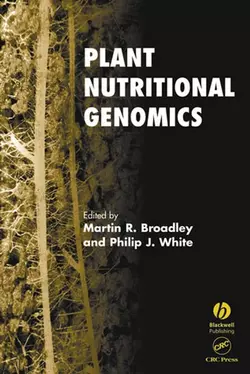Plant Nutritional Genomics

Martin Broadley и Philip White
Тип: PDF книга
Жанр: Зарубежная образовательная литература
Язык: на английском языке
Издательство: John Wiley & Sons Limited
Дата публикации: 25.04.2024
Отзывы: Пока нет Добавить отзыв
О книге: A ‘textbook’ plant typically comprises about 85% water and 13.5% carbohydrates. The remaining fraction contains at least 14 mineral elements, without which plants would be unable to complete their life cycles. Understanding plant nutrition and applying this knowledge to practical use is important for several reasons. First, an understanding of plant nutrition allows fertilisers to be used more wisely. Second, the nutritional composition of crops must be tailored to meet the health of humans and livestock. Third, many regions of the world are currently unsuitable for crop production, and an understanding of plant nutrition can be used to develop strategies either for the remediation of this land or for the cultivation of novel crops. That application of knowledge of plant nutrition can be achieved through genotypic or agronomic approaches. Genotypic approaches, based on crop selection and / or breeding (conventional or GM), have recently begun to benefit from technological advances, including the completion of plant genome sequencing projects. This book provides an overview of how plant nutritional genomics, defined as the interaction between a plant′s genome and its nutritional characteristics, has developed in the light of these technological advances, and how this new knowledge might usefully be applied. This is a book for researchers and professionals in plant molecular genetics, biochemistry and physiology, in both the academic and industrial sectors.